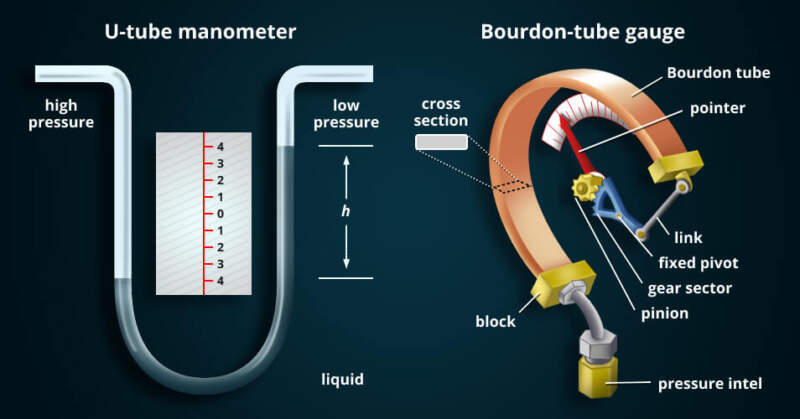A manometer is a device used to measure pressure, typically in a gas or liquid. It consists of a U-shaped tube filled with a liquid, such as water or mercury, and is commonly used in various industries and applications. In this article, we will explore the definition, uses, and how a manometer works.
Definition of a Manometer
A manometer is a pressure-measuring instrument that uses the principle of hydrostatic equilibrium to determine the pressure of a gas or liquid. It consists of a U-shaped tube, with one end connected to the source of pressure and the other end open to the atmosphere. The tube is filled with a liquid, and the difference in height between the two sides of the tube indicates the pressure being measured.
Uses of a Manometer

Manometers have a wide range of uses in various industries and applications. One common use is in HVAC systems, where a slack tube manometer is used to measure the pressure of air in ducts. This helps technicians ensure that the system is functioning properly and efficiently. Manometers are also used in medical equipment, such as blood pressure monitors, to measure the pressure of blood in the body. In industrial settings, manometers are used to measure the pressure of gases in pipelines and tanks, as well as to monitor the pressure of liquids in chemical processes.
How Does a Manometer Work?
The working principle of a manometer is based on the concept of hydrostatic equilibrium, which states that the pressure at any point in a fluid is equal in all directions. In a U-shaped tube mano meter, the liquid in the tube will rise on the side connected to the pressure source, while the other side will remain at atmospheric pressure. The difference in height between the two sides of the tube is then measured to determine the pressure.
There are different types of manometers, including the well-known slack tube manometer and the more modern digital mano meter. The slack tube mano meter uses a liquid, such as water or mercury, while the digital mano meter uses electronic sensors to measure pressure. Both types work on the same principle of hydrostatic equilibrium, but the digital manometer offers more precise and accurate readings.
Conclusion
In conclusion, a manometer is a versatile and essential instrument used to measure pressure in various industries and applications. Its simple yet effective design makes it a reliable tool for ensuring the proper functioning of systems and processes. Whether you are a technician, doctor, or engineer, understanding the definition, uses, and working principle of a manometer is crucial in your field of work.
Have you ever used a manometer before? What was your experience? Let us know in the comments.
You may like reading about the following:
For more information, visit: Apzo Media
